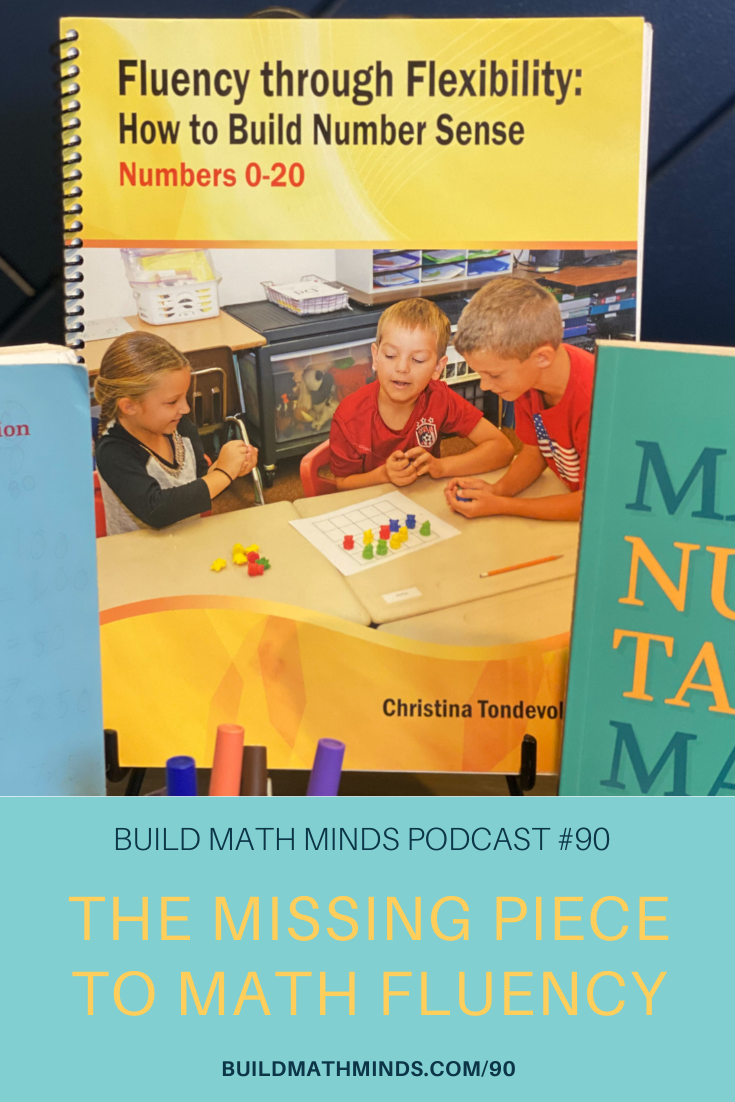Resources mentioned in this episode:
Fluency Through Flexibility: How to Build Number Sense. Numbers 0-20 by Christina Tondevold
Mastering the MathRack to Build Mathematical Minds by Christina Tondevold
Welcome fellow Recovering Traditionalists to Episode 90. Today we are looking at The Missing Piece to Math Fluency.
Do you ever have things in your life that ‘come full circle’ and you didn’t even realize it? For those who don’t know the phrase, when something ‘comes full circle’ it means it returns to something in the past.
Back in 2010, before I had ever started this journey of doing online professional development I wrote a book titled “Using the MathRack to Build Mathematical Minds” and now I have an online PD site called Build Math Minds. I did not base the name of my site off that book, it came up in conversation. In fact, Build Math Minds used to be called the K-5 Math Academy but that fateful conversation in 2017 caused me to change everything to Build Math Minds and just today I realized the connection to the book I wrote back in 2010.
The reason I realized it today was I had a full circle moment with another book I wrote and it prompted me to see other full circle moments. Back in 2014 I wrote the book Fluency through Flexibility. That book is all about building students flexibility with the numbers 0-20 to help them build their fluency with addition and subtraction within 20. Fast forward a few years to 2016 when I created my first online course called Number Sense 101. It was all about how to build number sense in order to help kids build their fluency in PreK-2 and a few years later I created one for 3rd-5th called Number Sense 201. Well, this last year I redid both of those courses and when I did that I called them The Flexibility Formula.
Back in 2014 when I wrote the book I knew the key to building kids’ fluency was to build their flexibility. When I was redesigning the course I didn’t even think about my old book, however I ended up coming full circle back to the idea that flexibility is the missing piece to building kids’ fluency with math.
I went back through the book today and I thought I’d share a piece of my own book. Yup, we are on episode 90 and I’m finally sharing one of my own books on this podcast.
On page 6 of Fluency Through Flexibility I write:
“It is important that children develop a strong understanding of numbers and their relationships before we ask them to compute. If they do not have that strong foundation, the only approaches they will have for addition are counting on their fingers or rote memorization. Neither of those are acceptable. We want children to have a foundation of number sense which allows them to recall and transfer information with ease. That does not happen if we move to memorization and drill too quickly. Brownell and Chazal (1935) found that if we move to an emphasis on speed too soon it just encourages children to become faster at their informal approaches (i.e. counting on their fingers). During the drill, they are just practicing their inefficient and sometimes inaccurate strategies, which leads us to think we need to drill them more. However, Rathmell (1978) showed that developing children’s derived fact strategies lead to better retention of their basic facts. So the goal is to facilitate children’s development of derived facts, but we can not expect them to develop those if they first do not have number sense. Your textbook probably has lessons on Doubles and Make a 10, but if children do not have the four relationships Van de Walle (2006) discusses which build a child’s number sense, then those problems in the book just become tasks to complete, not a strategy that will be used long term.”
To me, building Number Sense is synonymous with building our students’ Flexibility with numbers.
My book is for early elementary kids, but the idea about Fluency Through Flexibility is for all grades. It’s the idea that when we build a child’s flexibility with numbers they become more fluent. If you are wanting to get started on building fluency with your students by working on their flexibility, I have a Step-by-Step Guide to Increase Students’ Fluency.
Subscribe and Review in iTunes
Hey, are you subscribed to the Build Math Minds Podcast, yet? If you’re not, make sure to do that today because I don’t want you to miss any episodes! Click here to subscribe to the podcast in iTunes.
While you’re there, don’t forget to leave a review on iTunes too. I would love to know your thoughts and how we can make sure that we give you content that you will really enjoy.
To leave a review, head over to iTunes and click on “Ratings and Reviews” and “Write a Review.” I can’t wait to hear your thoughts about the podcast.




